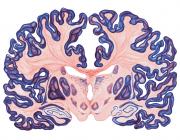A neural basis for real-world visual search in human occipitotemporal cortex.
Publication Year
2011
Type
Journal Article
Abstract
Mammals are highly skilled in rapidly detecting objects in cluttered natural environments, a skill necessary for survival. What are the neural mechanisms mediating detection of objects in natural scenes? Here, we use human brain imaging to address the role of top-down preparatory processes in the detection of familiar object categories in real-world environments. Brain activity was measured while participants were preparing to detect highly variable depictions of people or cars in natural scenes that were new to the participants. The preparation to detect objects of the target category, in the absence of visual input, evoked activity patterns in visual cortex that resembled the response to actual exemplars of the target category. Importantly, the selectivity of multivoxel preparatory activity patterns in object-selective cortex (OSC) predicted target detection performance. By contrast, preparatory activity in early visual cortex (V1) was negatively related to search performance. Additional behavioral results suggested that the dissociation between OSC and V1 reflected the use of different search strategies, linking OSC preparatory activity to relatively abstract search preparation and V1 to more specific imagery-like preparation. Finally, whole-brain searchlight analyses revealed that, in addition to OSC, response patterns in medial prefrontal cortex distinguished the target categories based on the search cues alone, suggesting that this region may constitute a top-down source of preparatory activity observed in visual cortex. These results indicate that in naturalistic situations, when the precise visual characteristics of target objects are not known in advance, preparatory activity at higher levels of the visual hierarchy selectively mediates visual search.
Keywords
Journal
Proc Natl Acad Sci U S A
Volume
108
Pages
12125-30
Date Published
07/2011
ISSN Number
1091-6490
Alternate Journal
Proc. Natl. Acad. Sci. U.S.A.
PMID
21730192

